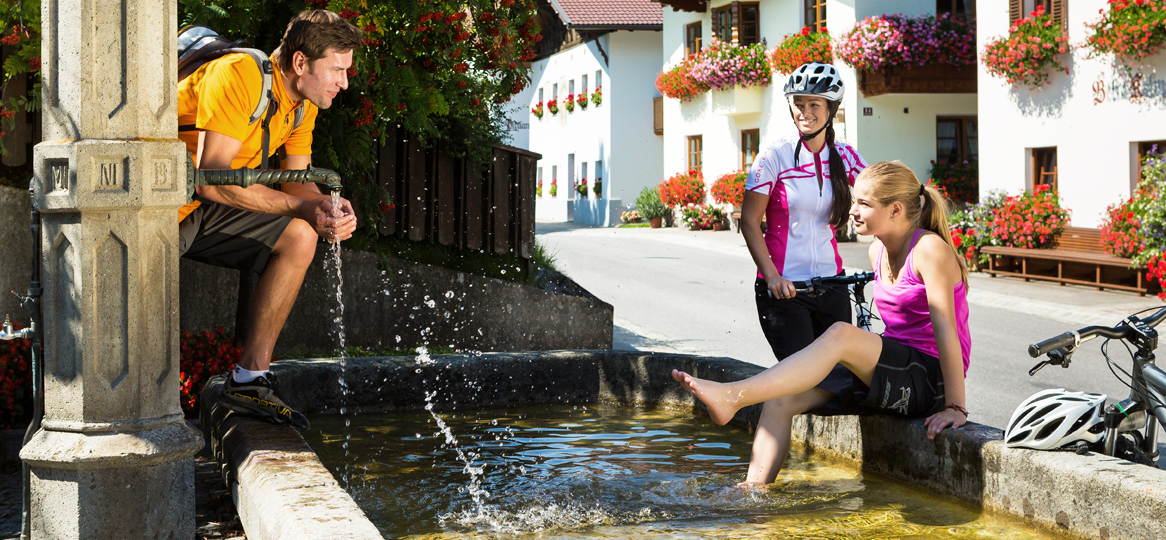How do you stay hydrated when you are out and about in summer? Even though Innsbruck sits in the Alpine mountains, it can still get really hot in summer. I have come across a lot of drinking fountains here just as I needed them. In fact, there are over 140 in Innsbruck!
Crystal Clear
The drinking fountains are well distributed alright, but do people use them? Absolutely! The key factor, I think, is that the water here is tasty and refreshing. It tastes simply neutral and its chilly temperature quenches the thirst fast. Their popularity is further backed up by people’s confidence in the water quality which is top-notch.
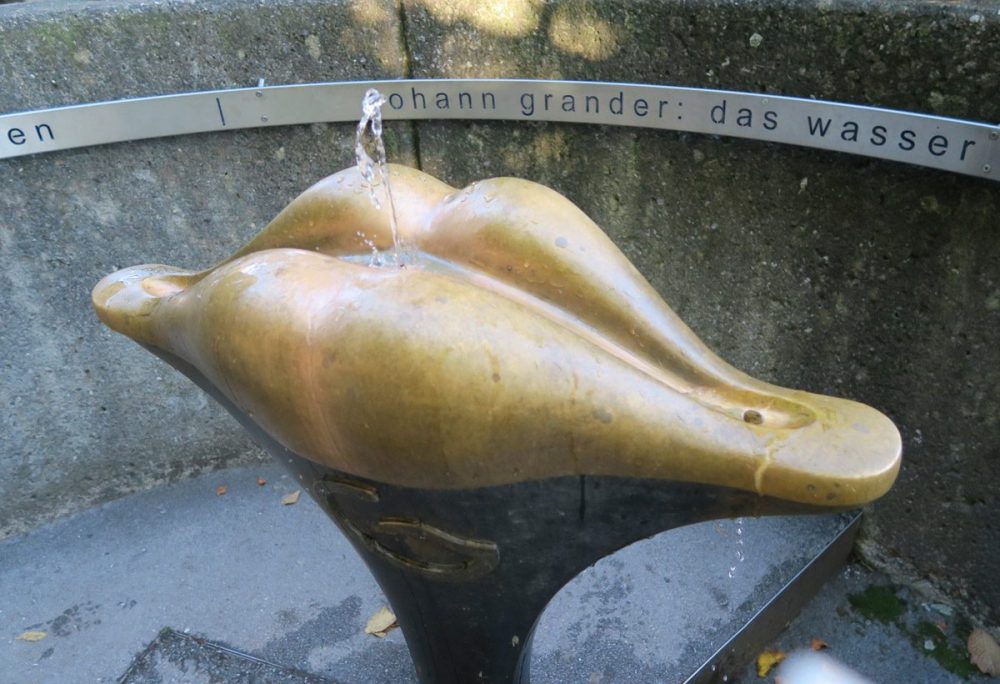
The “lips” fountain in the Alpenzoo, designed by artist Georg Loewit © Ichia Wu
Natural Instinct
Many drinking fountains here provide constantly-running streams. Therefore, the water always feels fresh and the sound of the flow encourages the passersby to stop and replenish.
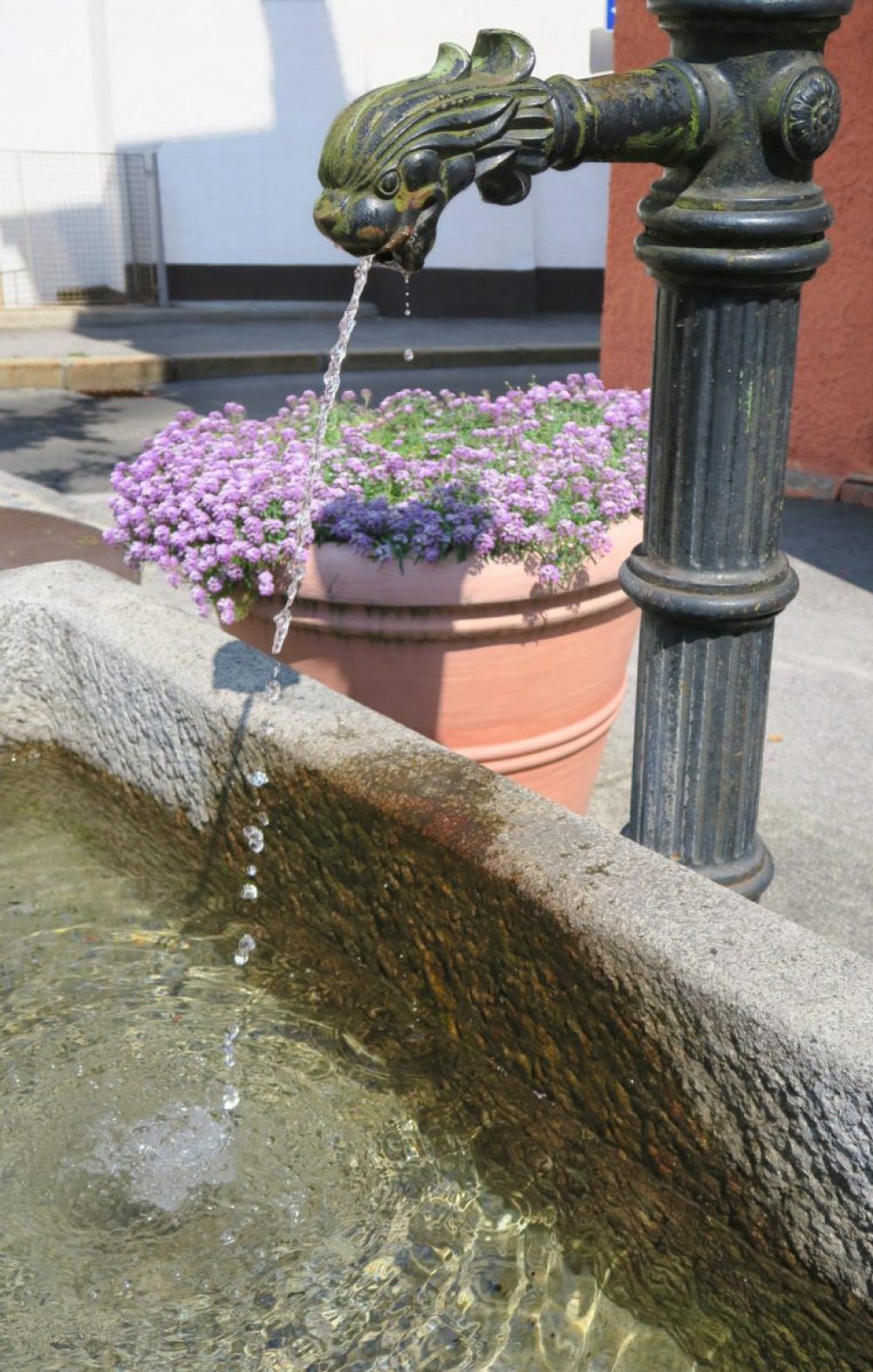
One of the many drinking fountains in Hötting © Ichia Wu
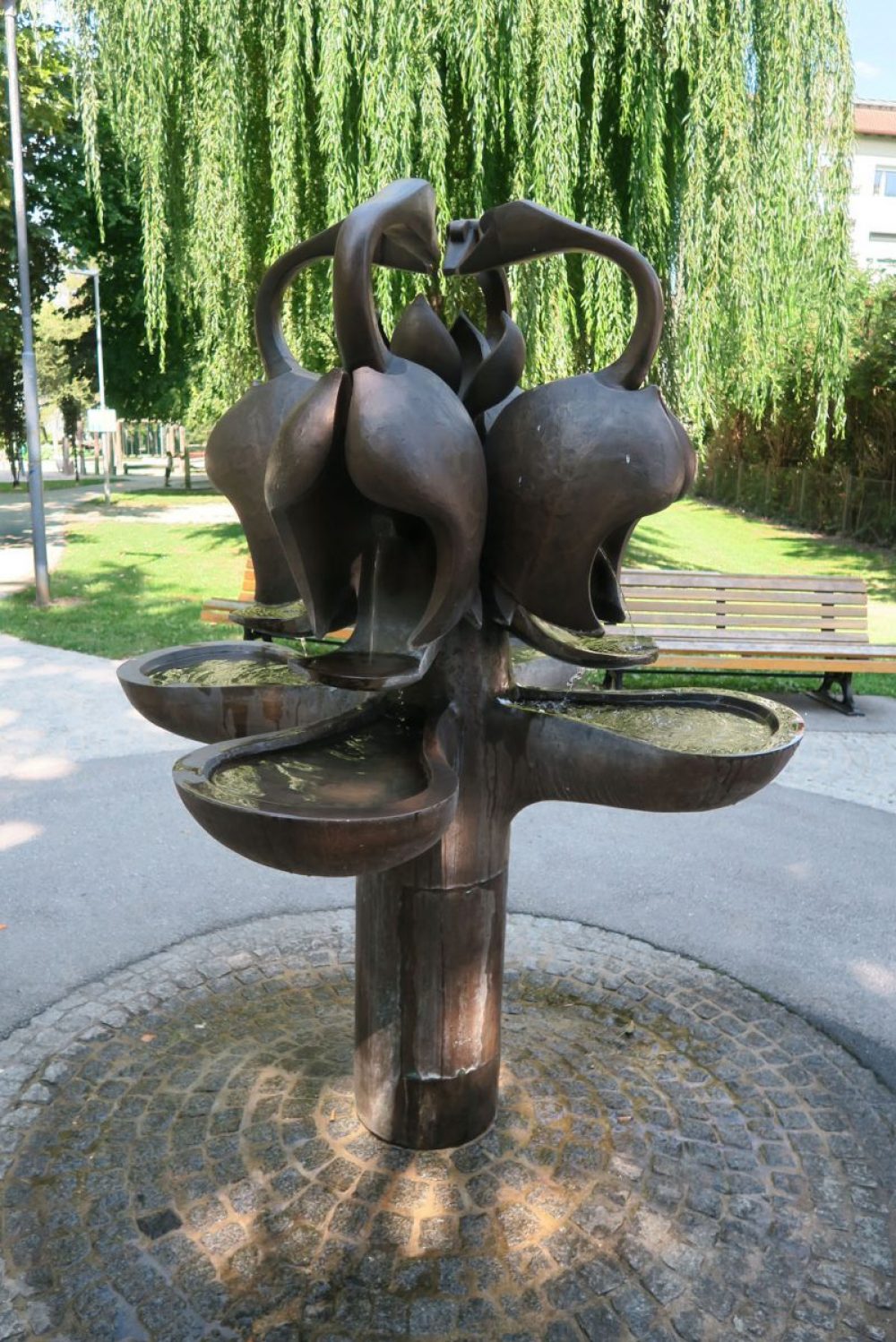
The Schwanenbrunnen in Reichenau (near Gutshofweg playground), designed by local artist Michael Defner in 1983 © Ichia Wu
It’s a Lifestyle
The network of drinking fountains supports the fairly active lifestyle in Innsbruck. Before the snow returns, whether people go biking, hiking, jogging, dog-walking or even shopping, there are revitalizing water fountains dotted along the route. Many people simply bring a handy bottle to refill. Of course, the beer at the mountain Alms is still irresistible especially after the climb, but it’s a good idea to replenish your bottle at their drinking fountains for the journey!
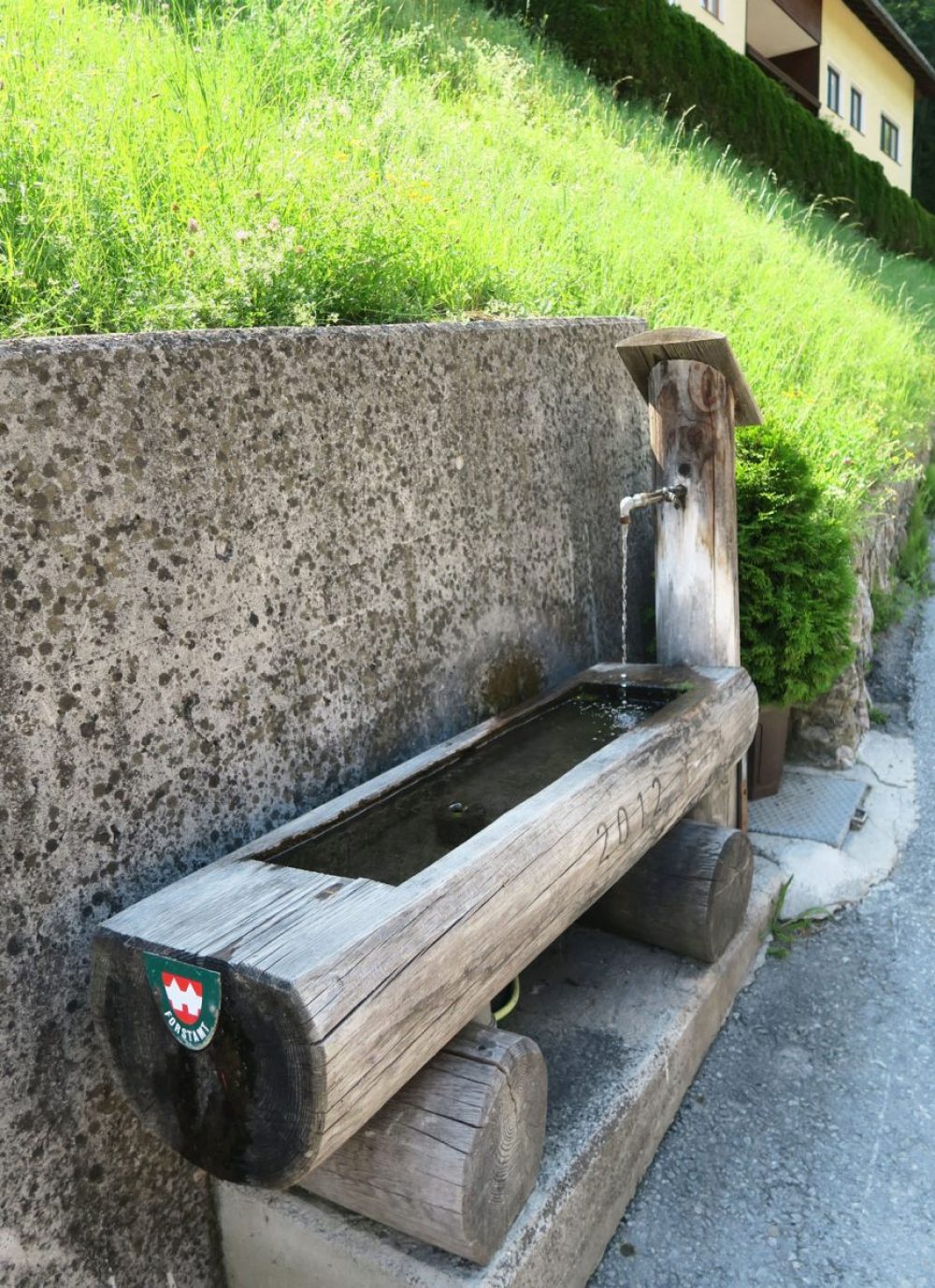
One of the many drinking fountains in Hötting © Ichia Wu
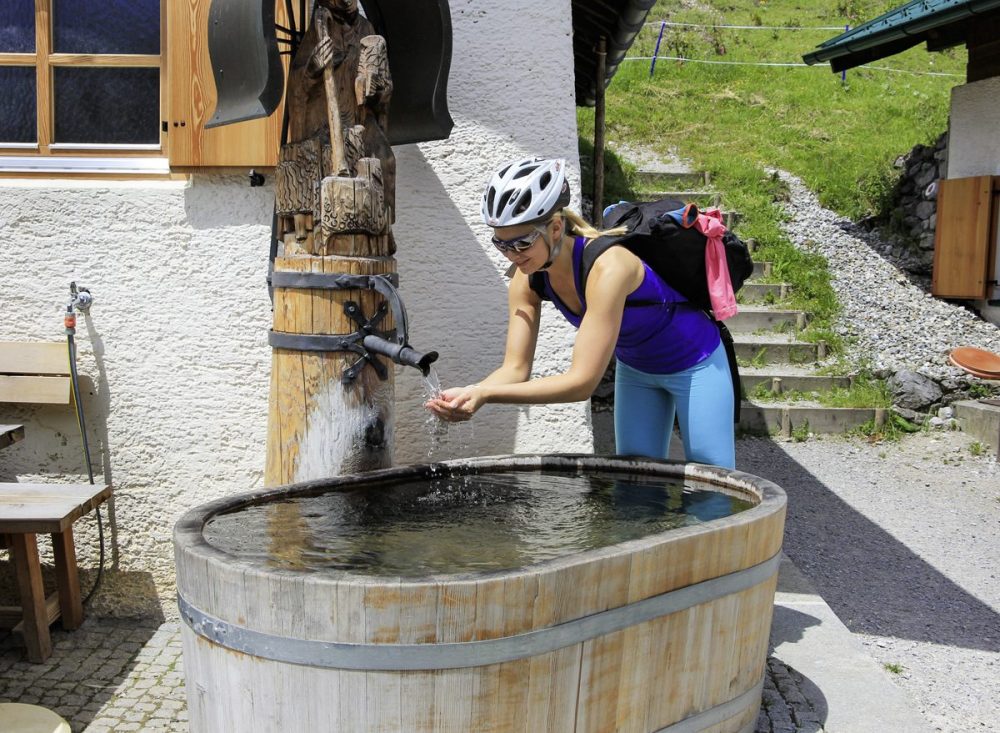
The drinking fountain at Höttinger Alm © TVB Innsbruck / Cugola
Healthy Living and Sustainability
The convenience and the density of the drinking fountains help people develop the habit of using them. Many playgrounds are equipped with drinking fountains and I often see children actively using them instead of turning to sugary drinks. On the other hand, single-use plastic bottles are an environmental issue. I have regrettably bought too many bottles of water when I lived elsewhere. In Innsbruck, bringing and refilling my own bottle is my preferred and sole choice!
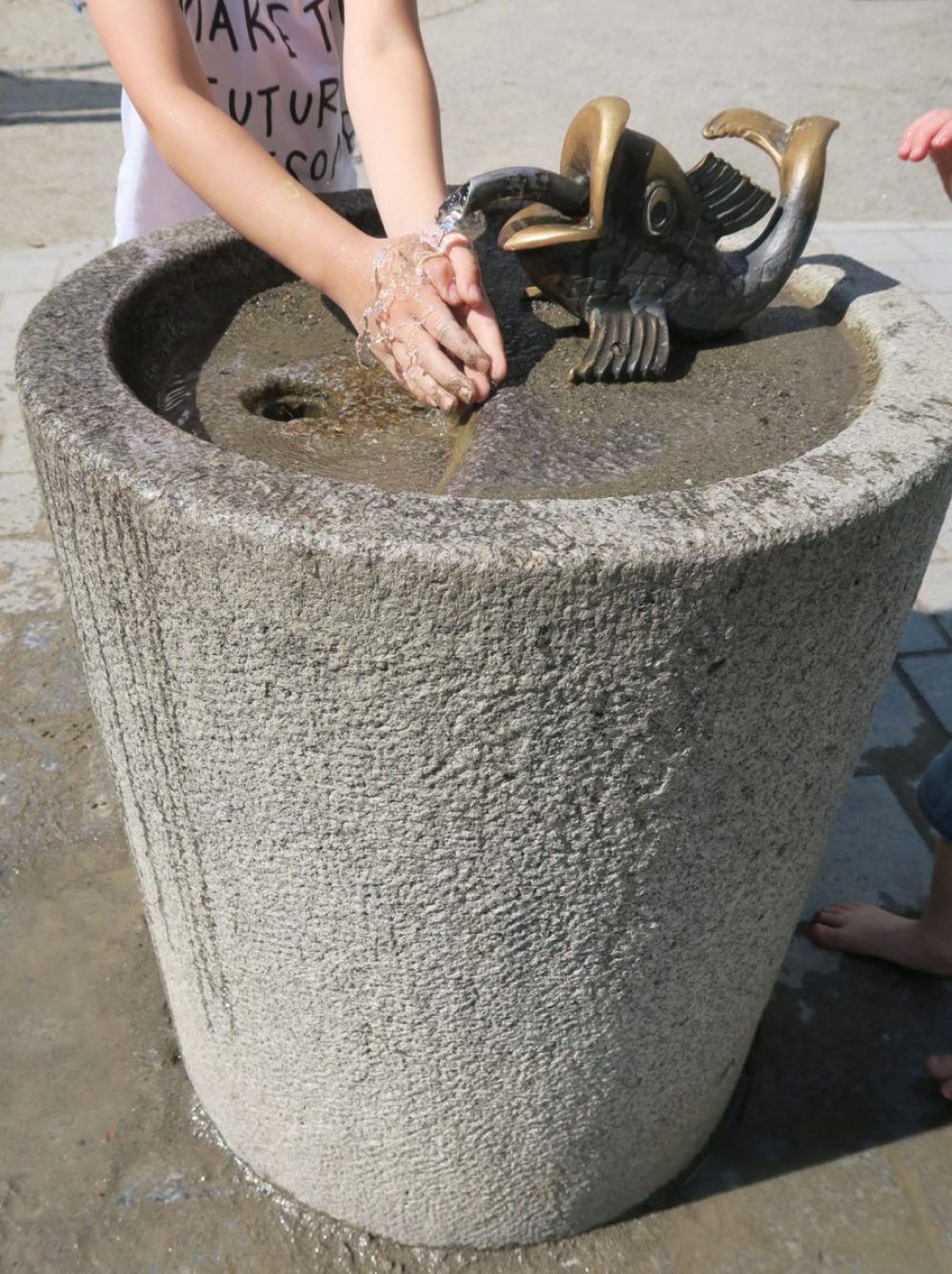
The drinking fountains in the playgrounds are designed to suit children’s height. This one is in Adolf-Pichler-Platz. © Ichia Wu
Drinking Fountains in the City Center
The Old Town was the first outlet in Innsbruck supplying spring water to the public. The water was originally directed from Hötting (in the west) but Mühlau (in the north) has become the main source for the city since the 16th century. Both areas are at the foot of the Nordkette, part of the Karwendel Nature Reserve. In the City Museum, there is a section focusing on the local history of water supply.
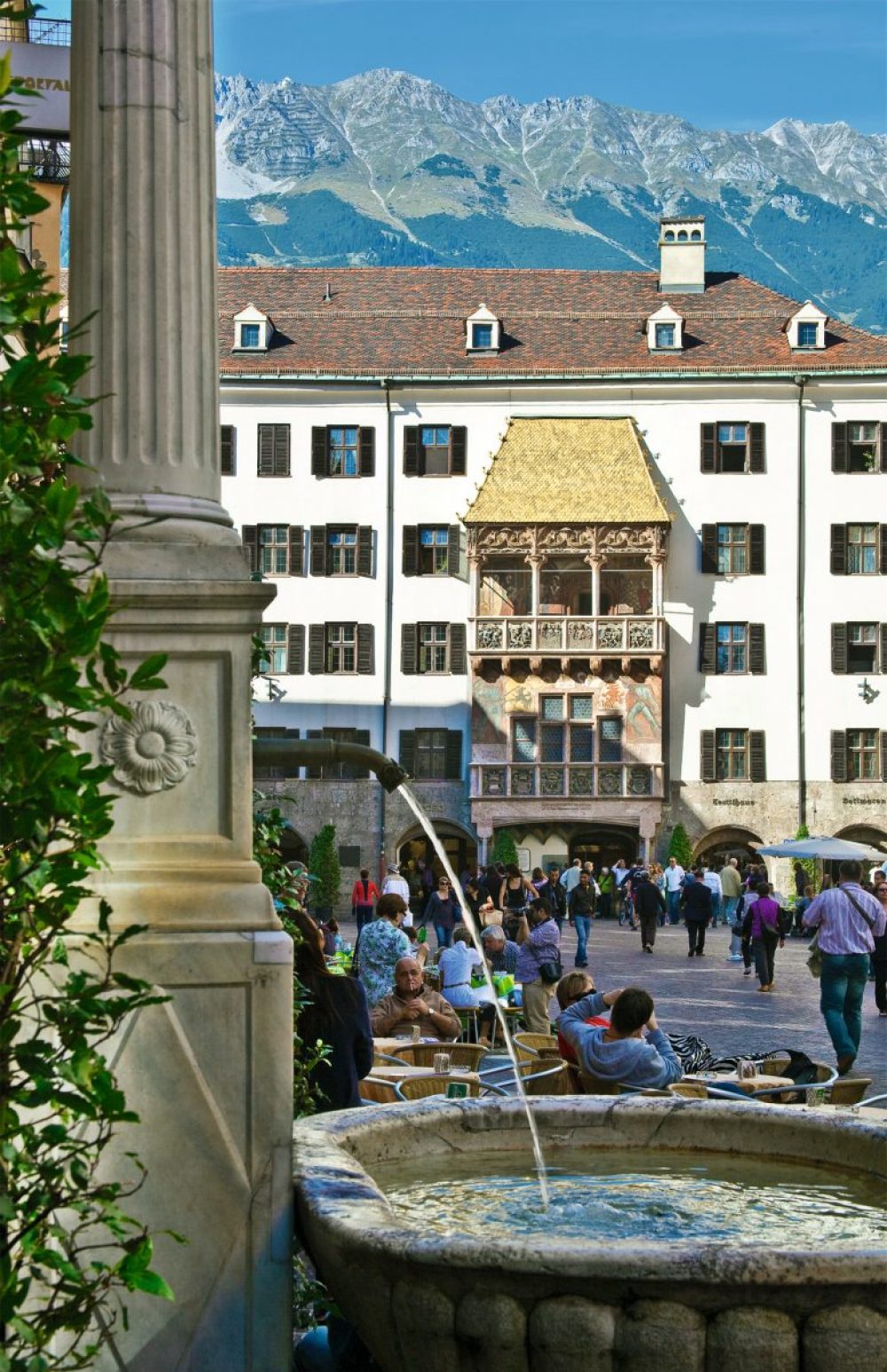
The Trautsonbrunnen in front of 22 Herzog-Friedrich-Straße © TVB Innsbruck / Christof Lackner
As there are plenty of restaurants, cafes and bars in the Old Town, you might not be looking for water on the street. However, there are a few interesting drinking fountains worth a look:
- Trautsonbrunnen (pictured above): A Baroque style marble fountain, built in 1806, in front of Trautsonhaus (22 Herzog-Friedrich-Straße) between Golden Roof and the Swarovski shop
- Golden Roof: The small but artistic fountain on the facade was installed in 1934. It shows an angel above the coat of arms of Innsbruck. This is the historic site where in 1485 spring water was offered for the first time in Innsbruck.
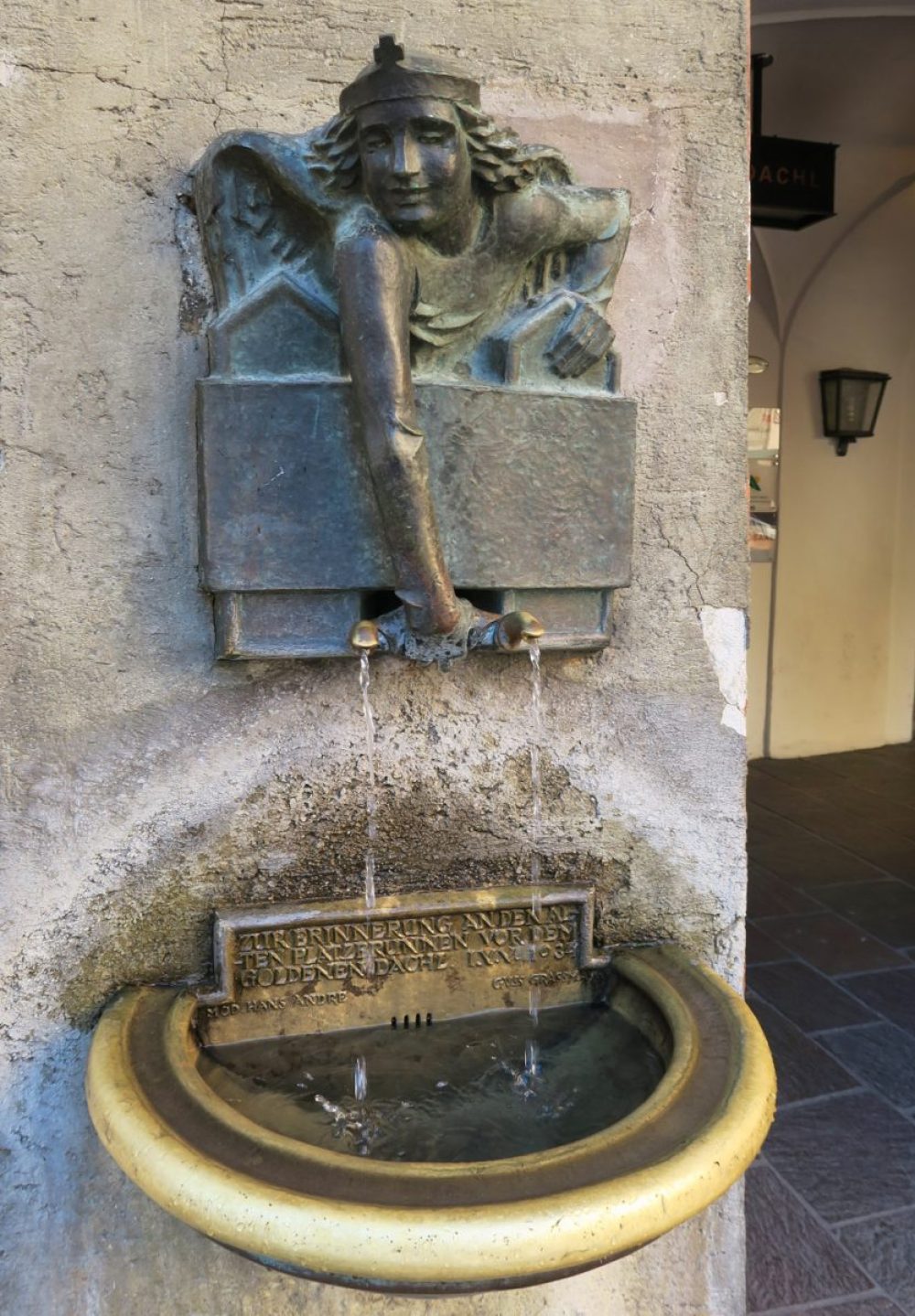
The fountain on the facade of Golden Roof, founded by local historian Hans Hörtnagl © Ichia Wu
- Bücherbrunnen (Book Fountain) : This is a special fountain in a lovely corner (near Stiftgasse 2 & 4). I don’t think we are meant to drink from it due to its design but the water is of drinking quality.
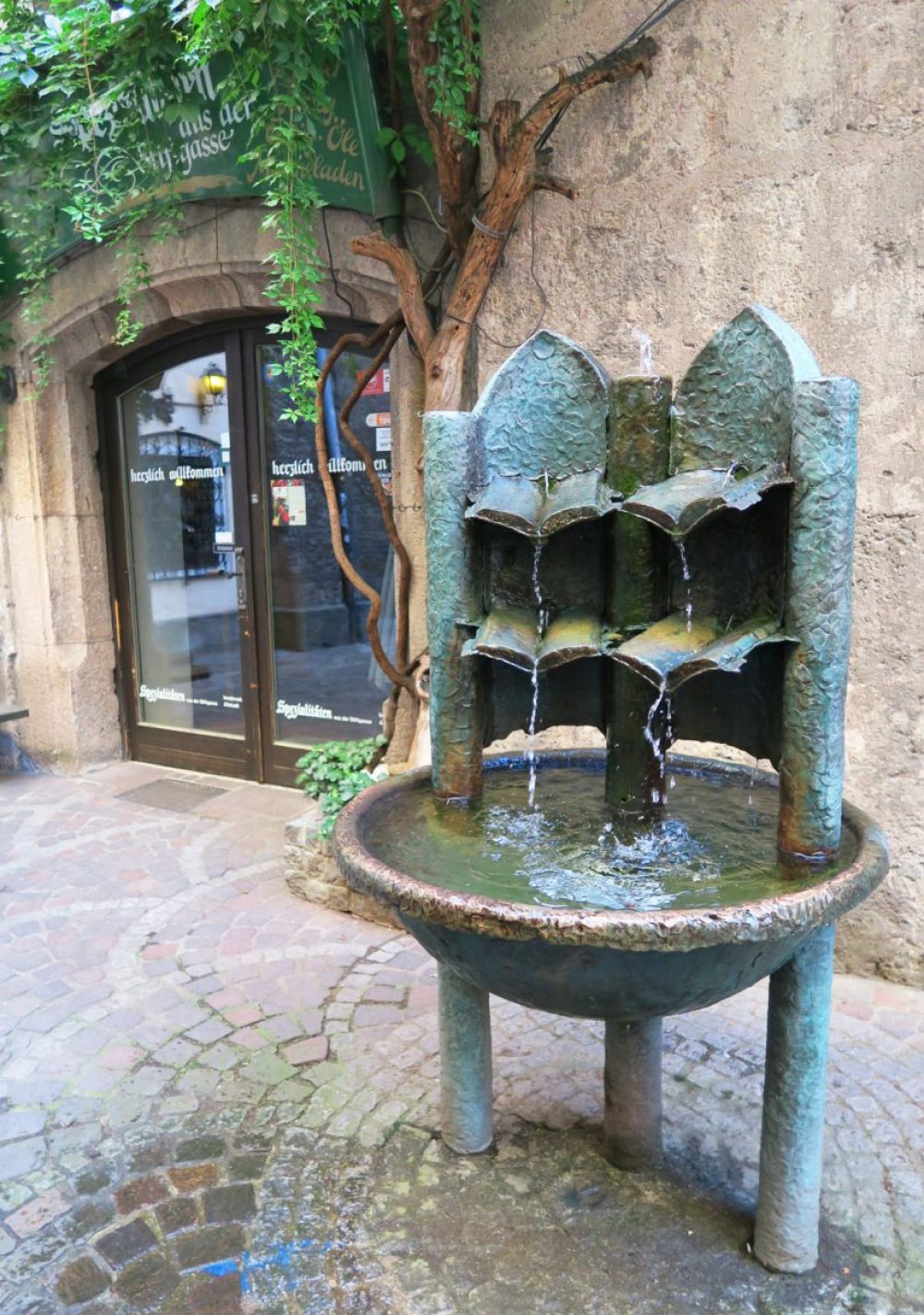
The Bücherbrunnen in the Old Town, designed by local artist Michael Defner in 1985 © Ichia Wu
Village Fountains
There is a term in German called “Dorfbrunnen” which means “village fountain” and most villages here seem to have one of their own. They are the “signature” fountains of their respective community and provide drinking water. (There are definitely more drinking fountains nearby though!)
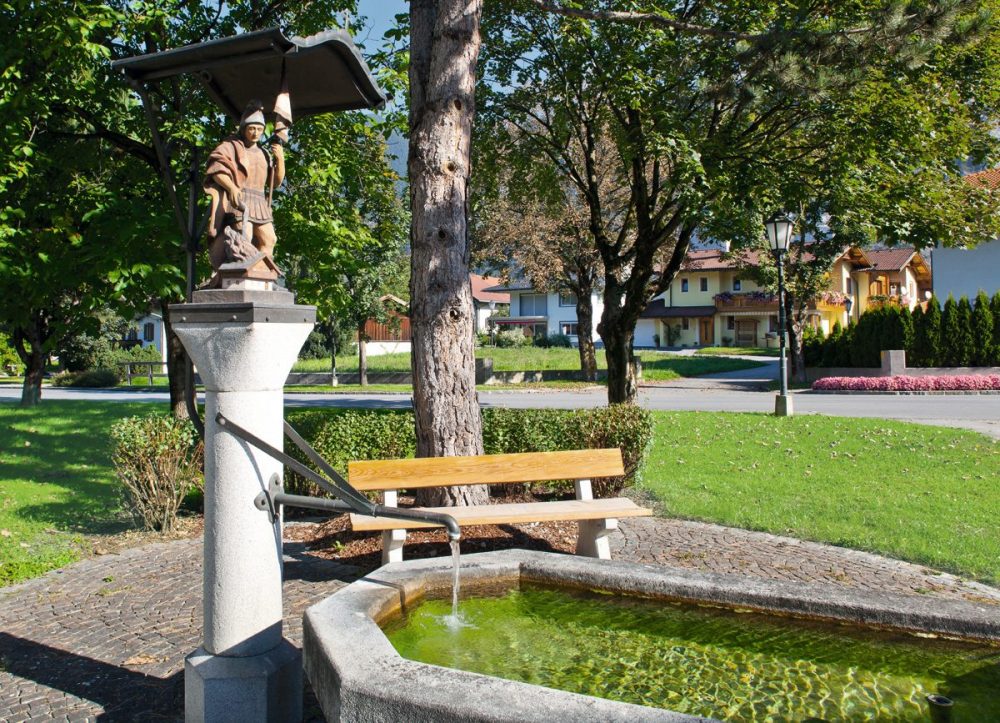
The Dorfbrunnen in Unterperfuss, with St. Florian on top saving a burning house © TVB Innsbruck / Christof Lackner
The more elaborated and classic “Dorfbrunnen” share a common style. At the end or on the side of a long trough stands a decorated column where the water comes out. On top of the column is a sheltered figure which usually depicts the local patron saint.
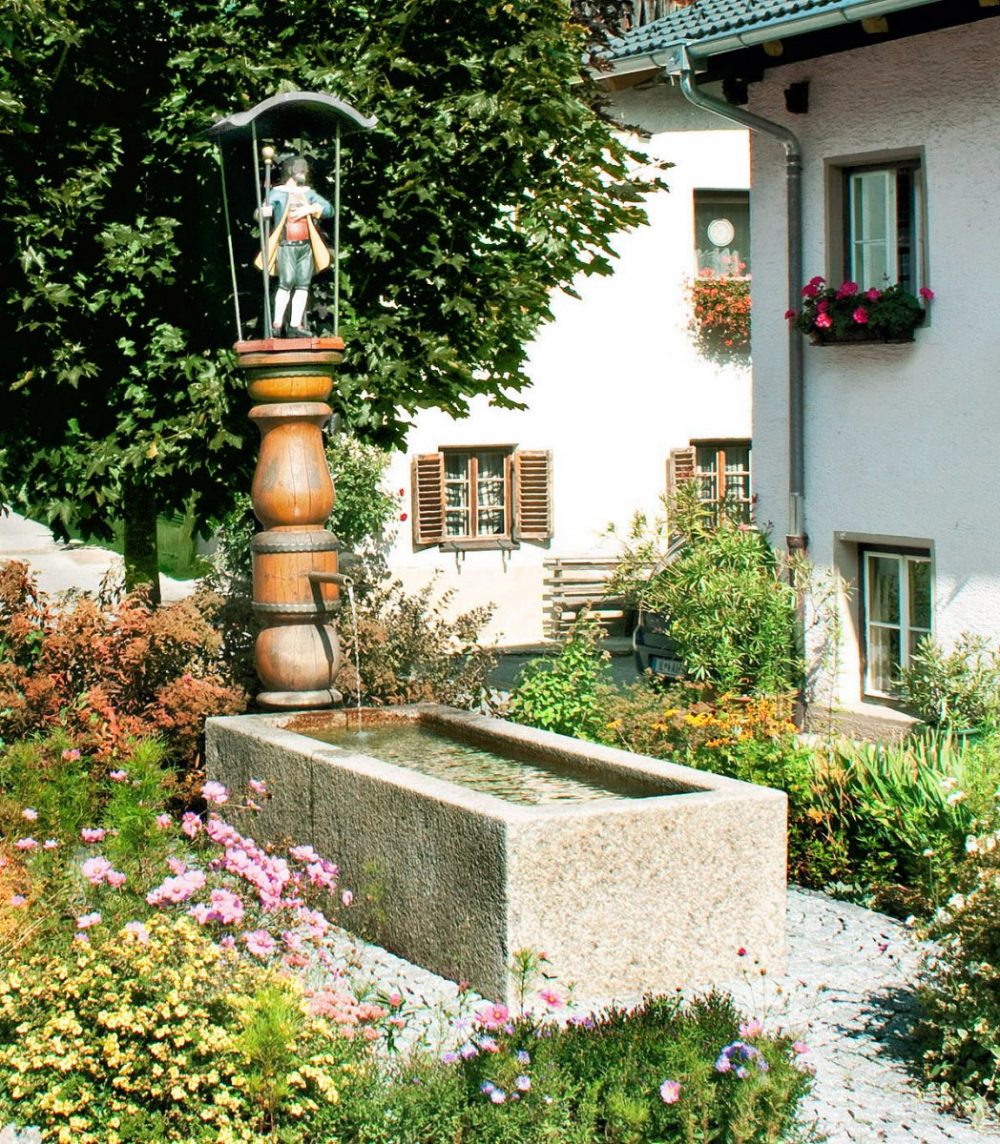
The “Dorfbrunnen” in Flaurling © TVB Innsbruck / Baumann
There is a Christian saint whom you are most likely to encounter in Tyrol – Saint Florian (Der Heilige Florian). He was born in Linz actually. I find it very fitting when he appears on top of drinking fountains. Since he was martyred by drowning, he is associated closely with water and is the guardian of firefighters. His statues usually hold a bucket purring water and are therefore easy to recognize.
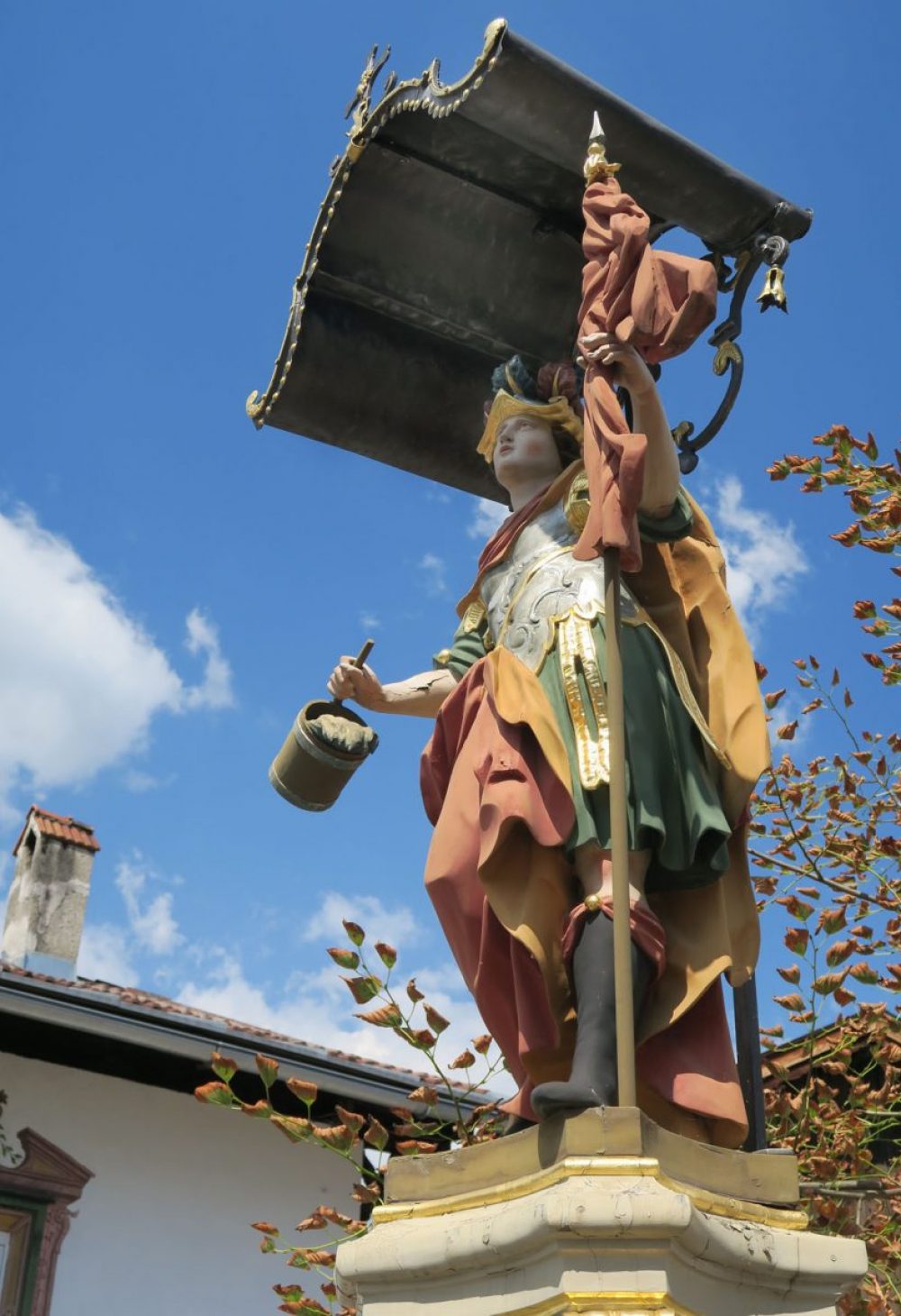
The Saint Florian drinking fountain in Pradl (west end of Egerdachstraße) © Ichia Wu
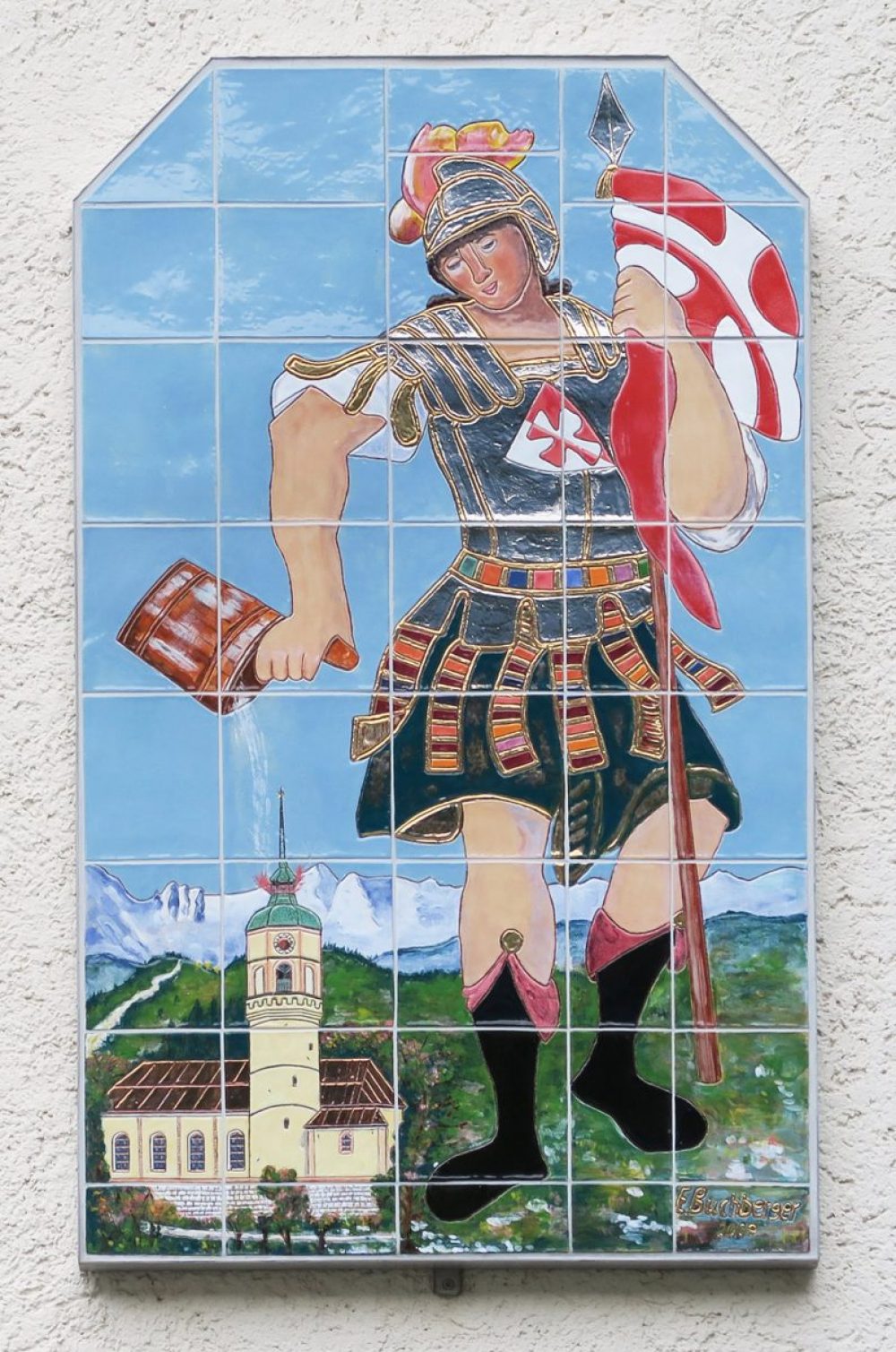
A ceramic portrait in Hötting, showing St. Florian purring water over Alte Höttinger Pfarrkirche (church) © Ichia Wu
Fountain Village
Apart from “Dorfbrunnen“, I also saw the term “Brunnendorf” (Fountain Village) when I visited Telfs, a market town 27 kilometres west to Innsbruck (about 20 minutes by train). It is famous for the traditional carnival “Telfer Schleicherlaufen” and used to have a lot of religion-themed drinking fountains. Several are still in use and you can simply follow this Culture Walk. Every January, there is a mass procession (Sebastianifeier) dedicated to their patron saint, St. Sebastian.
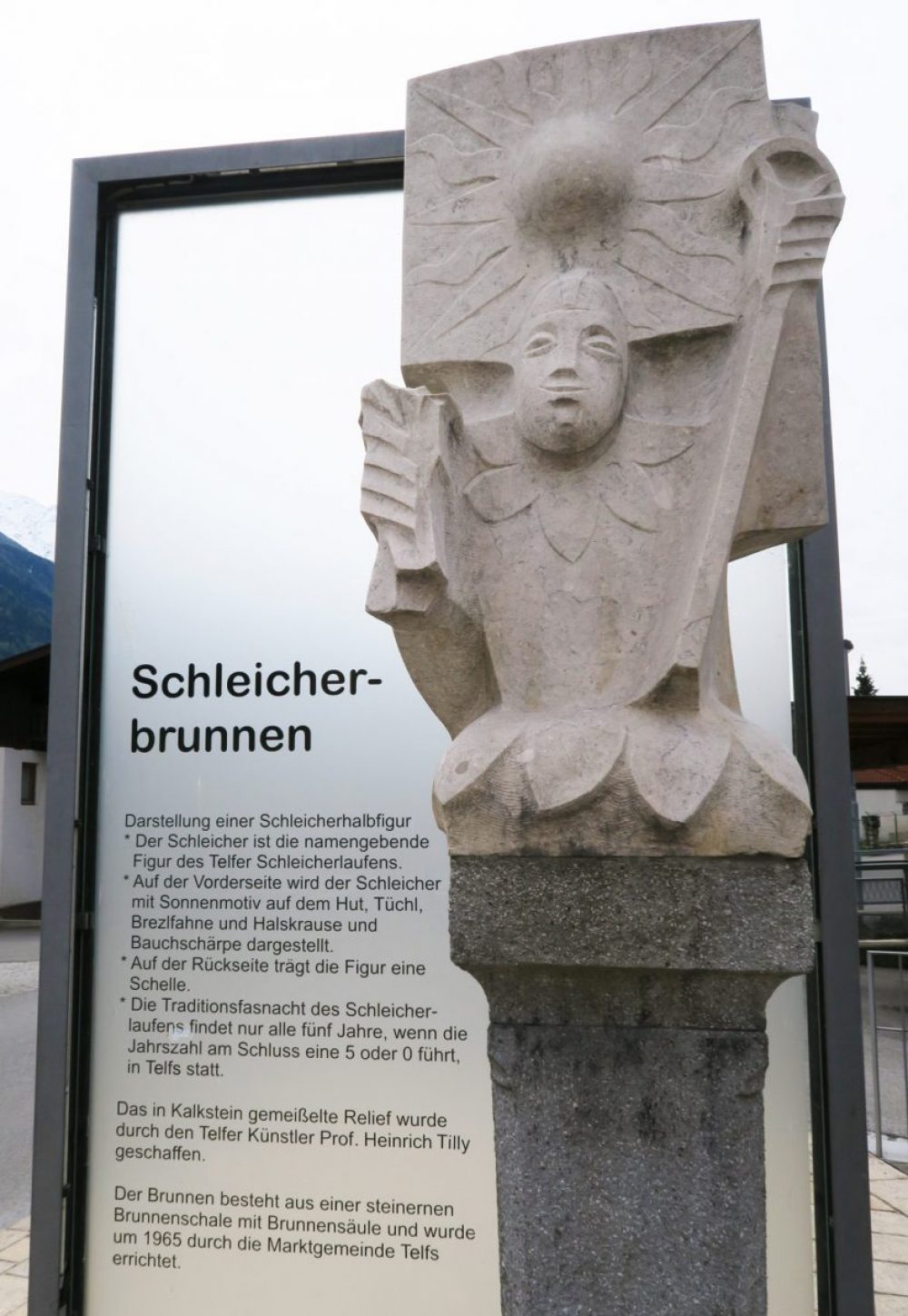
“Schleicher” is one of the local carnival characters in Telfs. The sculpture was made by local artist Prof. Heinrich Tilly in 1965. © Ichia Wu
Tips:
- Most drinking fountains operate only in summer. It’s a seasonal treat!
There is an interactive map showing some drinking fountains. For the full list, please refer to the city government’s website (only available in German; keyword: Trinkbrunnen).
- Popular hiking trails with drinking fountains on offer:
The following hiking routes start from Hungerburg.
The first drinking fountain is next to the cable car station (towards Seegrube). This fountain has a second basin close to the floor. How animal-friendly!
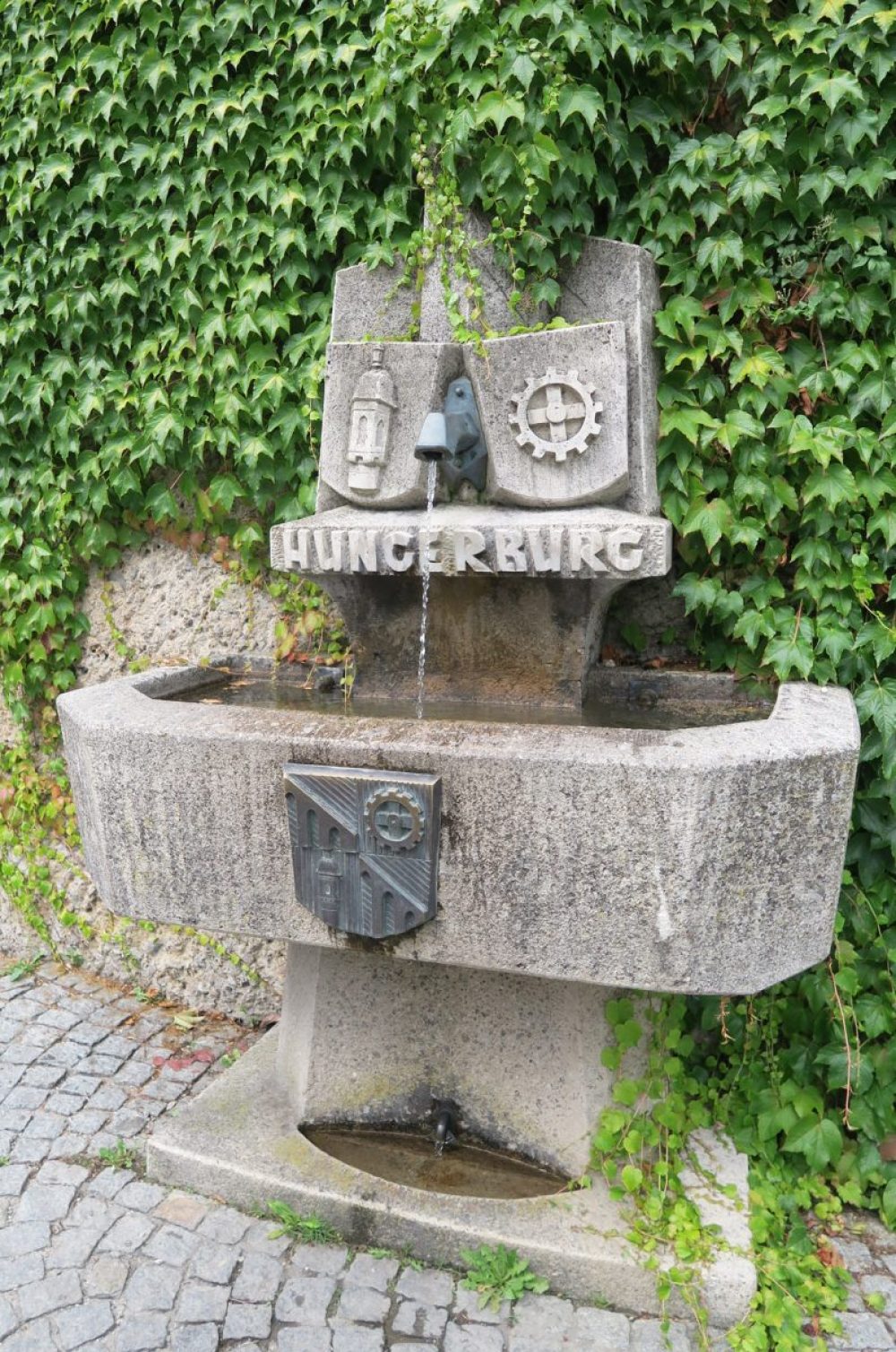
The Hungerburg drinking fountain next to the cable car station © Ichia Wu
- Popular jogging routes with drinking fountains on offer:
“Fitnessmeile“: The “Fitness Mile” runs along the Inn Promenade and the Sill Promenade between the Sieglangersteg (bridge) and New Orleans Brücke (bridge). There are areas with workout equipment installed, too.
- Personal favourite: north of the local church (Pfarrkirche) in Arzl, consist of a well-made statue, tasteful material, splendid drinking water and the smell of the farms
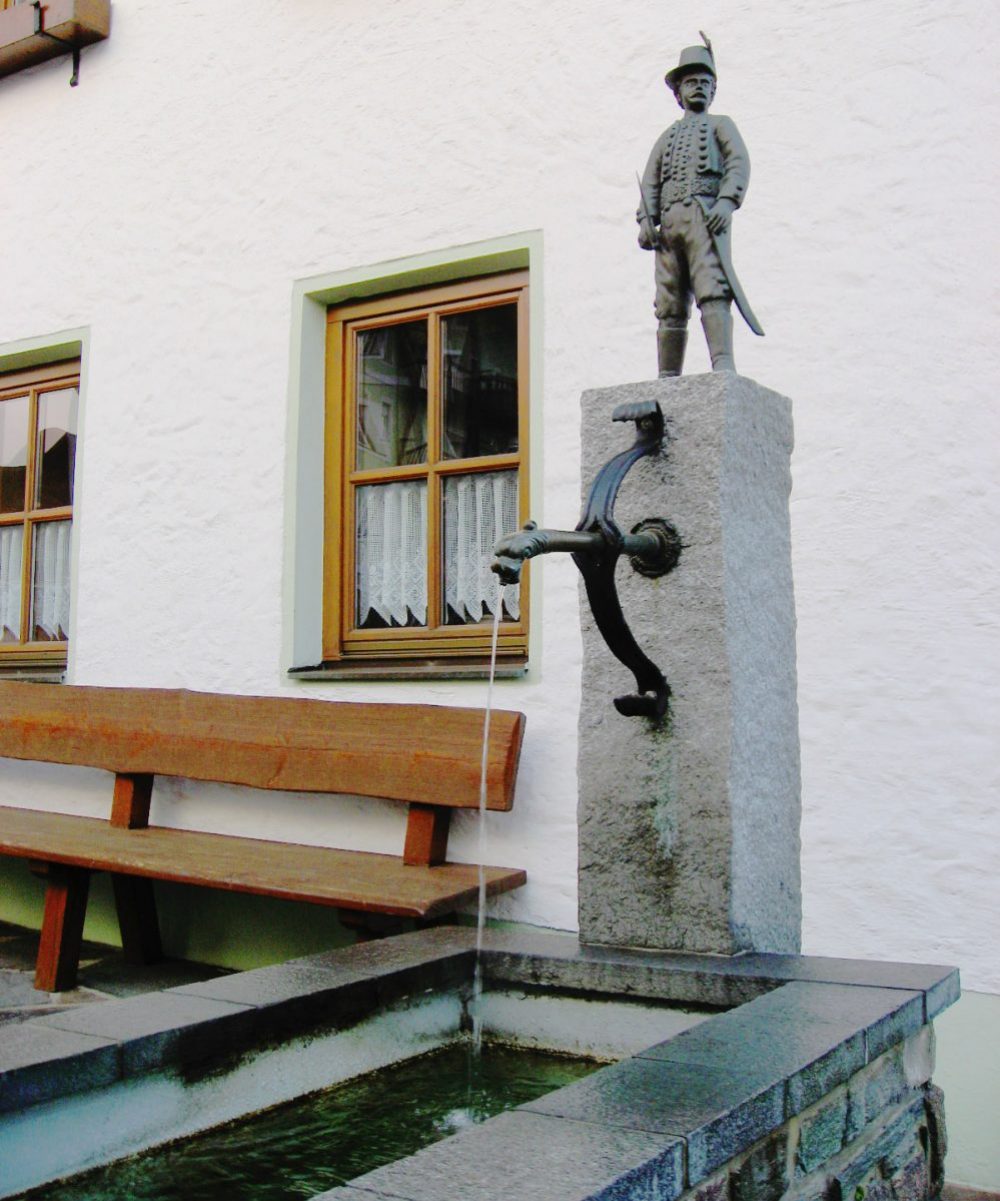
In front of Johannesgasse 1, at the Speckbacher Schützenkompanie memorial in Arzl © Ichia Wu
The Photo on top of this page: © TVB Innsbruck / Mario Webhofer

